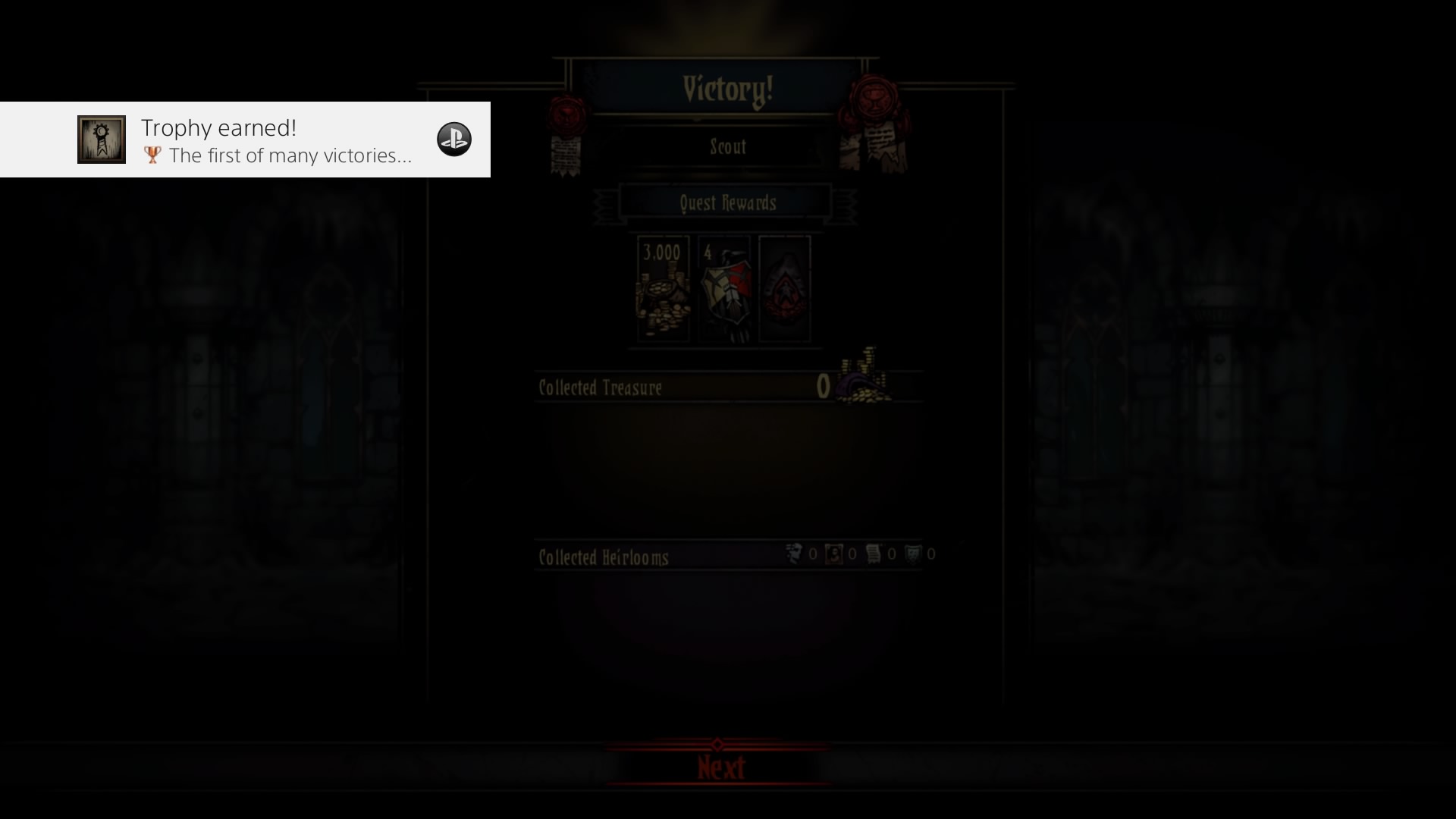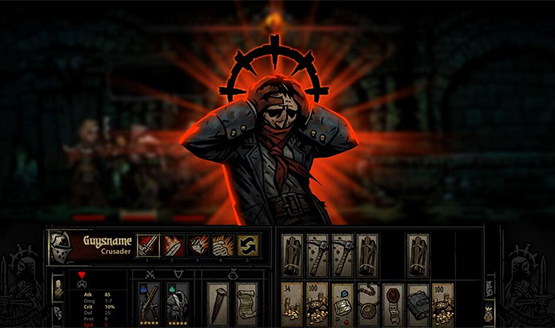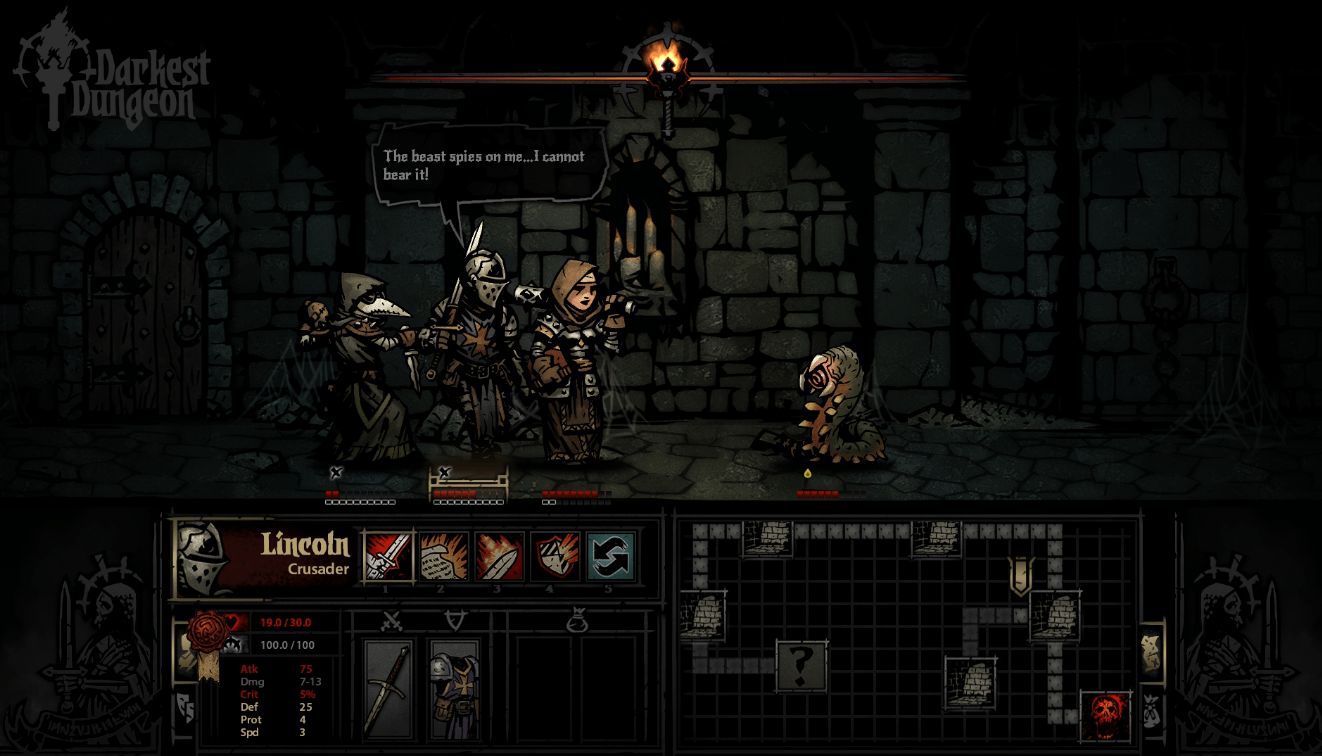Many of us joke that what doesn’t kill us only makes us stronger when it comes to stress. Darkest Dungeon actually incorporates that into every fiber of its being. When you send your chosen party of four to crawl through a dungeon, you may think of how they come out of the abysmal place with a limp who will never adventure again. But you’ve never had to think about the level of stress they’ve been put under. How a certain fight might have tested their resolve. How, perhaps, a dire situation changed them for the worse. Or on the flip-side, how a triumphant situation improved their morale to the point that it’s changed their personality for the better. You will have to take into account all of this in Darkest Dungeon, almost moreso than each character’s well-being. By the end, you’ll wonder what truly is the darkest dungeon: the final crawl or the recesses of the mind.
Test Your Mental Might
Darkest Dungeon tells the tale of one’s folly when seeking treasure, how it might just open up various portals to unimaginable horrors that have a need to kill everything in sight. The player inherits the mansion that spawned it all, and for some reason, this new owner feels the need to cleanse the world of these demonic terrors instead of making estate someone else’s problem. However, he’s not going to handle this personally. Why do that when there are plenty of adventurers he can send out to do it for him? They are practically a dime-a-dozen, after all.
It is the player’s job to hire the adventurers who come calling, outfit them appropriately, form a party, and then send them on their inevitable doom into dungeon after dungeon. While crawling the dungeon, the party will encounter various battles, which take place in a turn-based fashion. It’s rather odd to see a side-scrolling turn-based battle, but it works in its own quirky way. Where a partymember is placed in the line will affect his or her attacks. Sometimes an attack can be performed no matter where they are in line. Some ranged attacks can only occur if they’re in the third or fourth place. And then each attack will only be able to affect certain spots in enemy lines. Point blank shots, for instance, will only hit the first enemy in line, whereas the plague doctor’s plague grenade will only hit in the back of the line. Your party and the enemies will occasionally switch places in the line, which will cause you to throw any strategy out the window and create a new one on the fly.
If that wasn’t enough to keep track of in the lines, here’s another doozy. When an enemy is killed, they don’t always instantly disintegrate. Sometimes their corpse is left behind. The corpse will eventually disappear, but the problem is that it takes a spot in line. Therefore, if a corpse is in the very front of the line and you have a character who only sports close-range melee attacks, he may not do a whole lot of good aside from clearing the corpse a little more quickly. Unless the the enemy at the front is a massive monster that packs a wallop, I generally attacked the back of the line first to avoid the whole corpse debacle.

Once a partymember dies, that is it for them and they will never return. You can always hire another one to take his or her place, because they really are a dime a dozen. That said though, if you lose a high level adventurer, you’ll have to start at scratch with this new one.
In one playthrough, I wanted to see what would happen if I didn’t take care of the party, if I was a tyrant of a leader. How far could I get if I just worked them to literal death? The answer is not far at all. I was greatly amused for the first few dungeon crawls, but it stopped being so hilarious when the party was wiped out before completing the set dungeon objectives, forcing me to start over with a new party. Once I went back to taking care of them by fleeing a dungeon when they couldn’t go on and letting them heal back at the Hamlet, they would level up over time and finish the tasks. You’re going to kill plenty of these adventurers as it is; might as well take care of the ones you have for as long as you can.
Turn the Negative Into a Positive
Even after successfully completing a dungeon, it’s highly unlikely everyone returned alive and mentally unscathed. If an adventurer has their resolved tested and they fail the test, they may develop a negative quirk. These can be abusive, fearful, or hateful. The negative quirks will often make them out of turn or act without the player’s input. If they’re grave enough, they’ll impact the rest of the party and affect how they can and will crawl the next dungeon. When you return the party to the Hamlet, which is your home base, you have the option to let the adventurers rest up and heal their mental states in various ways. There is always the tavern or the abbey. Each adventurer will prefer a various method for recuperating. A Paladin will not partake in a brothel, but he will happily flog himself in the name of penance at the Abbey. I had one adventurer who refused to drink. I had another who developed a gambling problem, so I couldn’t let him play cards anymore in between dungeon runs. He lost up to 2000 of my gold, the bastard.
If you catch a negative quirk soon enough and send the afflicted partymember for recovery, chances are high you can eliminate the negative quirk entirely. Even rarer, you can turn the negative to a positive quirk.
Every now and then while in battle, a character’s resolve is tested and he comes out on the good side of the test, developing a positive quirk. The quirk may entice her to heal or buff everyone in between rounds, or call for him to shield a weaker teammate from a potential deathblow. Just like in real life, you never know how a battle will affect someone, and you never know how that new negative or positive trait will affect the entire party. It definitely keeps you on your toes with each skirmish, and you grow to really care about each adventurer’s mental state before entering a dungeon. This is the first game I’ve ever played where stress can literally kill; you don’t take that lightly after losing your best fighter.
The Controls Will Test Your Patience
The game’s controls make it incredibly obvious that Darkest Dungeon was ported over to the PlayStation 4 and Vita. They’re barely explained, even in the tutorial, and it’s made worse that they’re unbelievably unintuitive. The L1 and R1 buttons are used to shuffle through menus, and then the left and right analog sticks are used to make a selection in the menu. Then there’s the in-battle item menu that is never explained how to summon, which is done so with the up and down arrows. There’s also the weird concept of using the left analog stick to move the part through a corridor, but then you use the right analog stick to leave a room.
The game was originally created on PC, where the mouse and keyboard were obviously at the forefront of the developer’s minds. I don’t know if this was their first experience in transposing mouse and keyboard controls to a console controller, but it definitely came across that way. Fortunately, since the game is turn-based, nothing predicated upon me acting quickly, so fumbling through controls only made the battle sequences last a few seconds longer while I remember how to put those bandages on my bleeder.
Make no mistake; Darkest Dungeon will test your own resolve as much as it does your party. It’s unforgivably difficult by design, and it’s one that will keep you coming back again and again, as if you’ve developed your own masochistic negative quirk. You may hate it at first, especially while you’re figuring out the controls, but it knows how to get its hooks into you. You’ll find the gothic comic-book art style charming, the characters’ personalities quirky yet endearing, and you’ll find each dungeon has its own unique challenge. Maybe it bested your party this time, but what if you let them recover a bit and try again with a Paladin in your team instead of the occultist? Maybe you need to pack more torches since that one guy is afraid of the dark. Perhaps it was a mistake to hire that specific plague doctor in the first place That is the beauty of the Darkest Dungeon—constantly stepping back and reformulating a strategy to counter stress.
That’s what we all try to do day in and day out in our own lives, right?
Darkest Dungeon review code provided by publisher. Reviewed on PS4 and Vita. For more information on scoring please see our Review Policy here.
-
Grimdark, comic-book style art
-
Well implemented concept of the character's stress levels
-
Unusual micromanagement strategies for turn-based battles
-
Cross-buy and cross-saves between PS4 and Vita
-
Unintuitive controls
-
Every dungeon will test your resolve as much as the party's
Darkest Dungeon
-
Darkest Dungeon #1
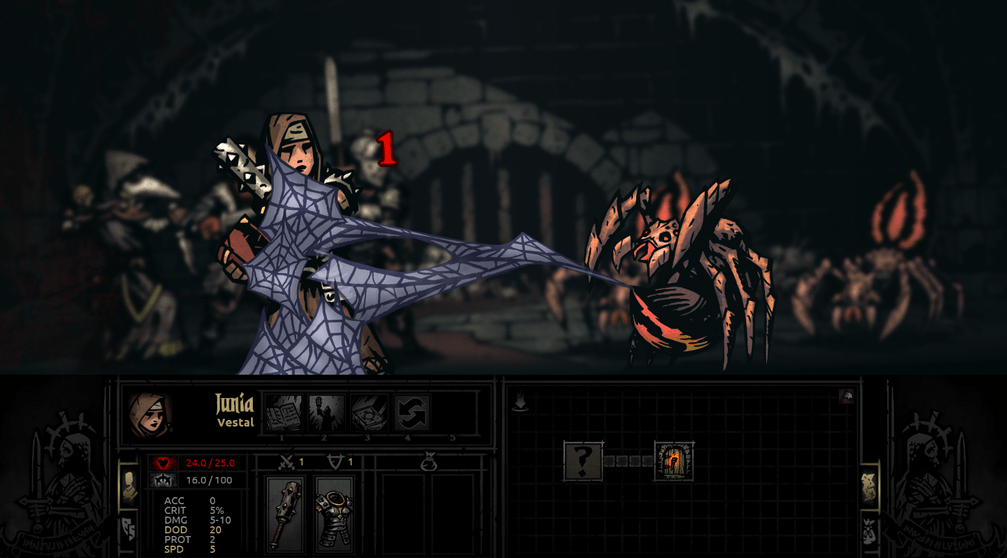
-
Darkest Dungeon #2
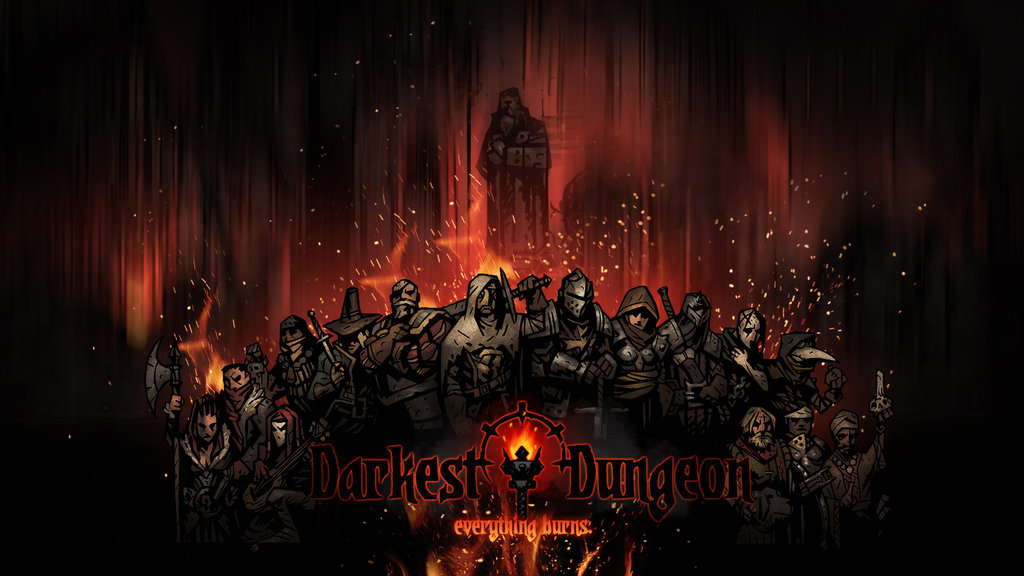
-
Darkest Dungeon #3
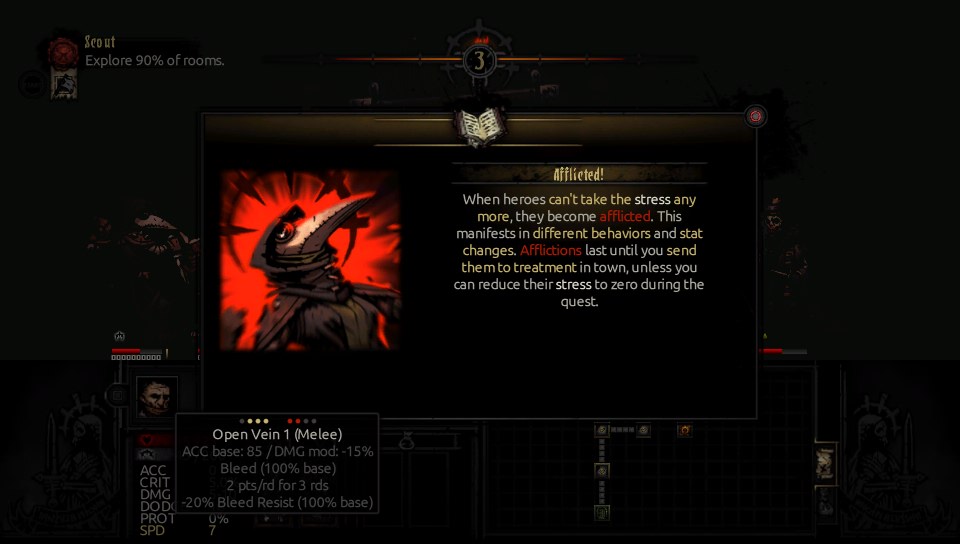
-
Darkest Dungeon #4
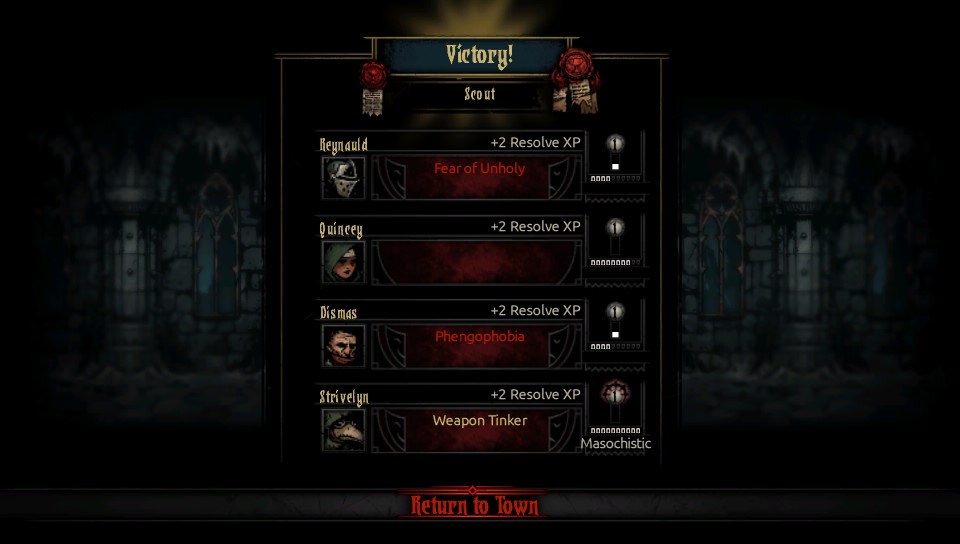
-
Darkest Dungeon #5
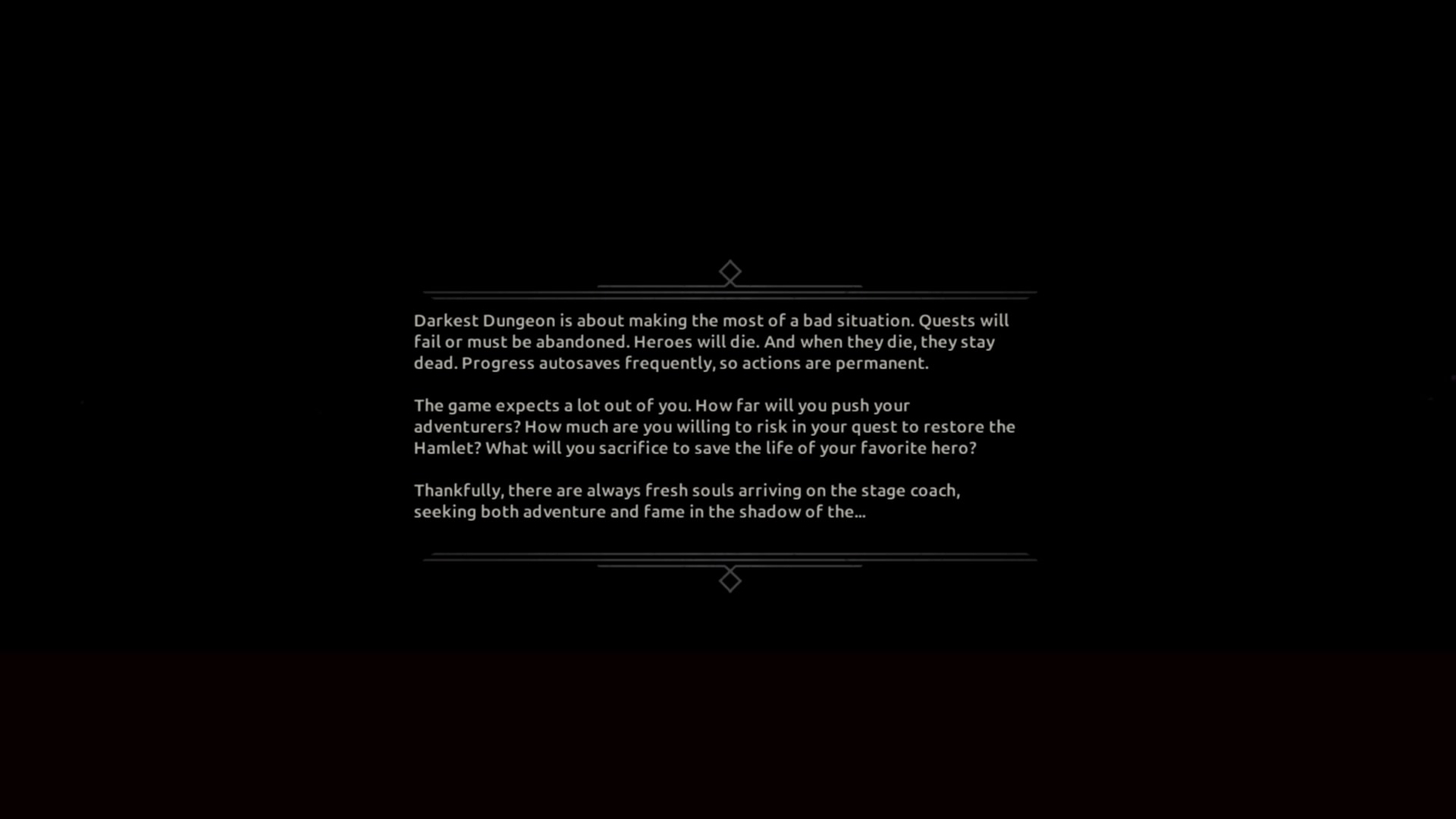
-
Darkest Dungeon #6

-
Darkest Dungeon #7
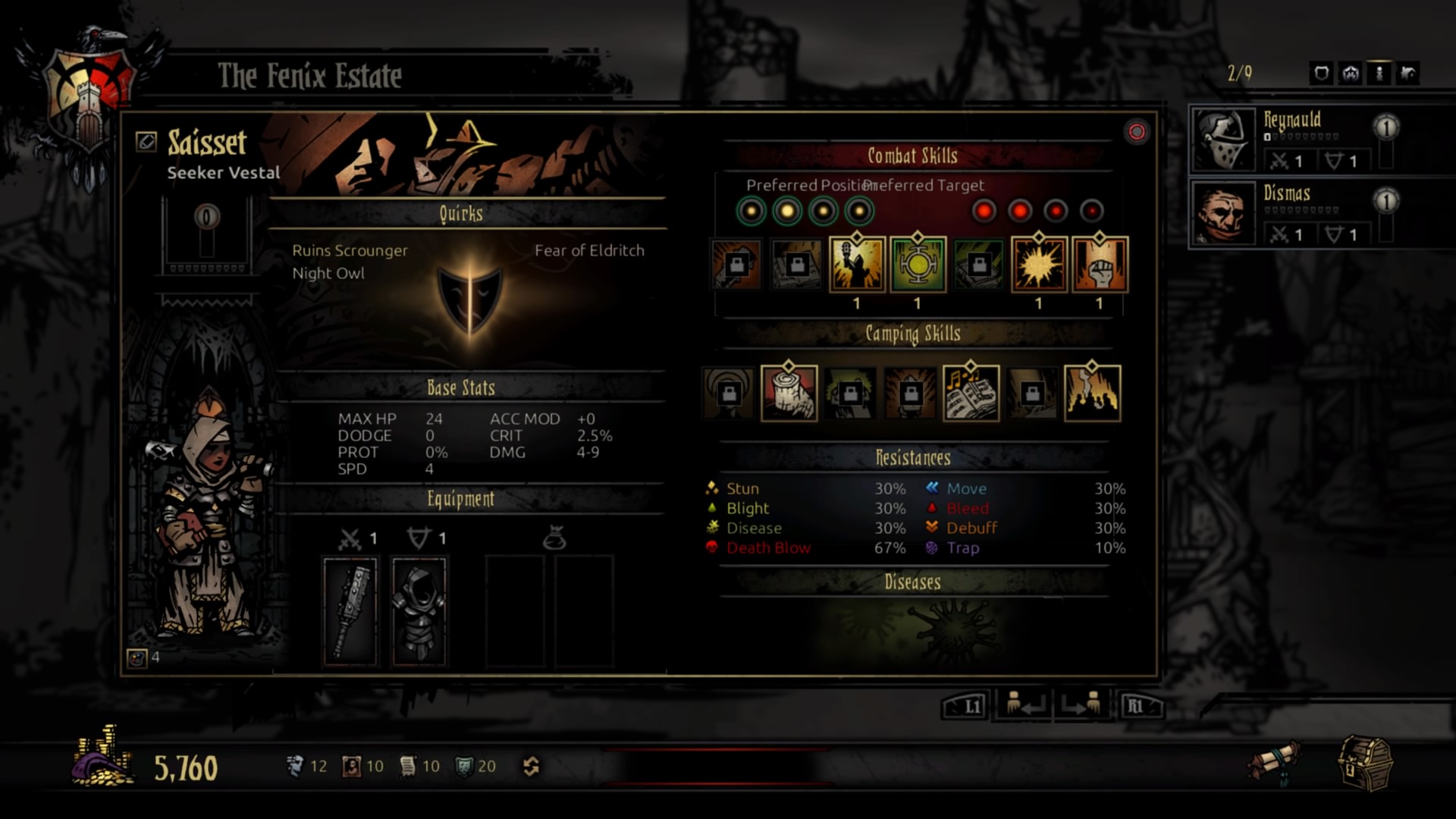
-
Darkest Dungeon #8

-
Darkest Dungeon #9
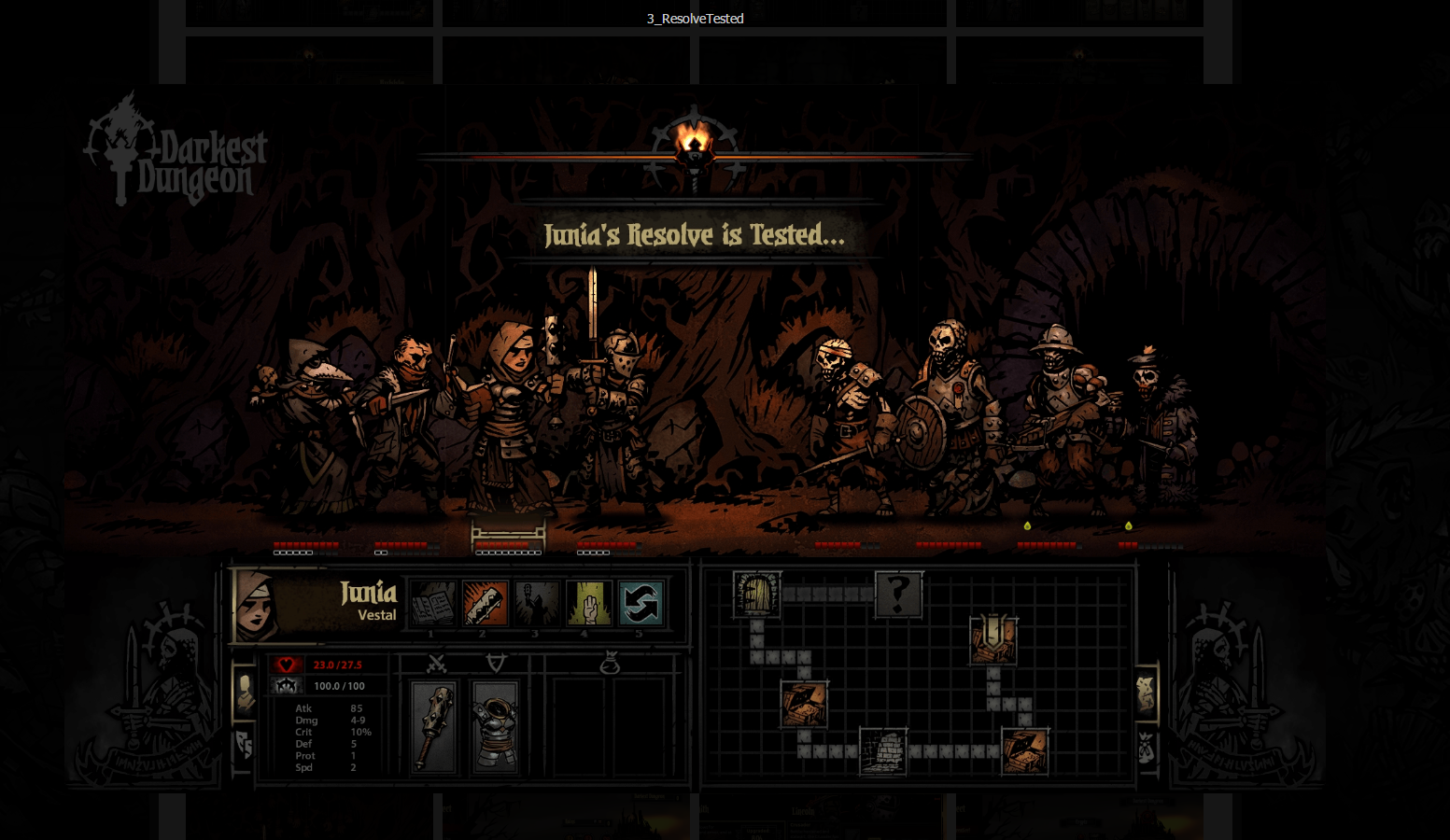
-
Darkest Dungeon #10
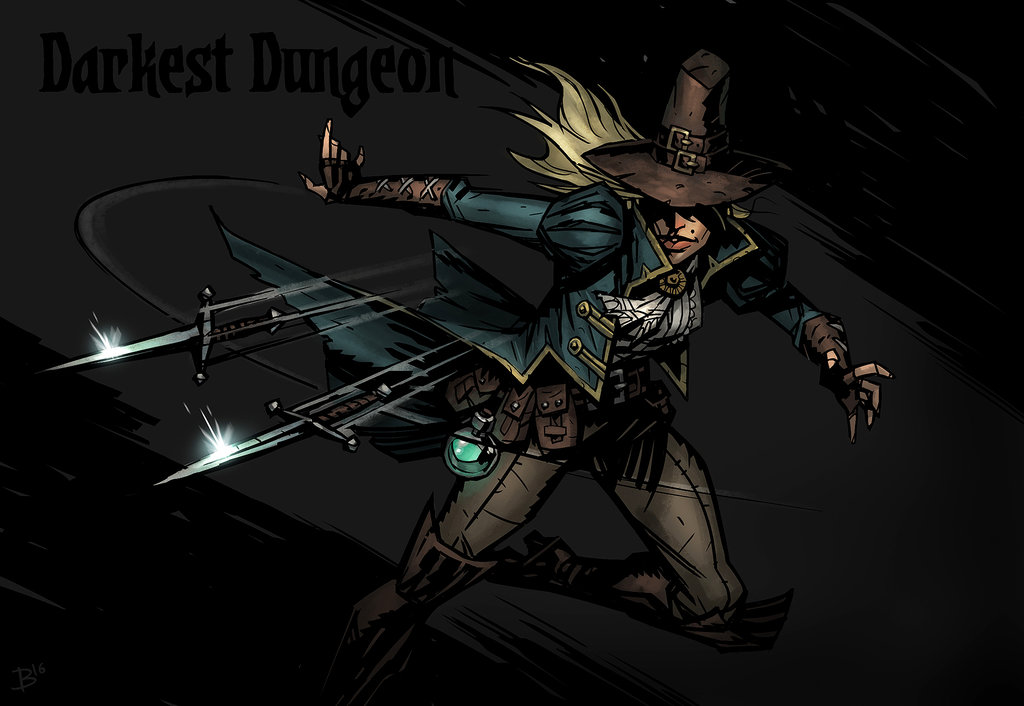
-
Darkest Dungeon #11
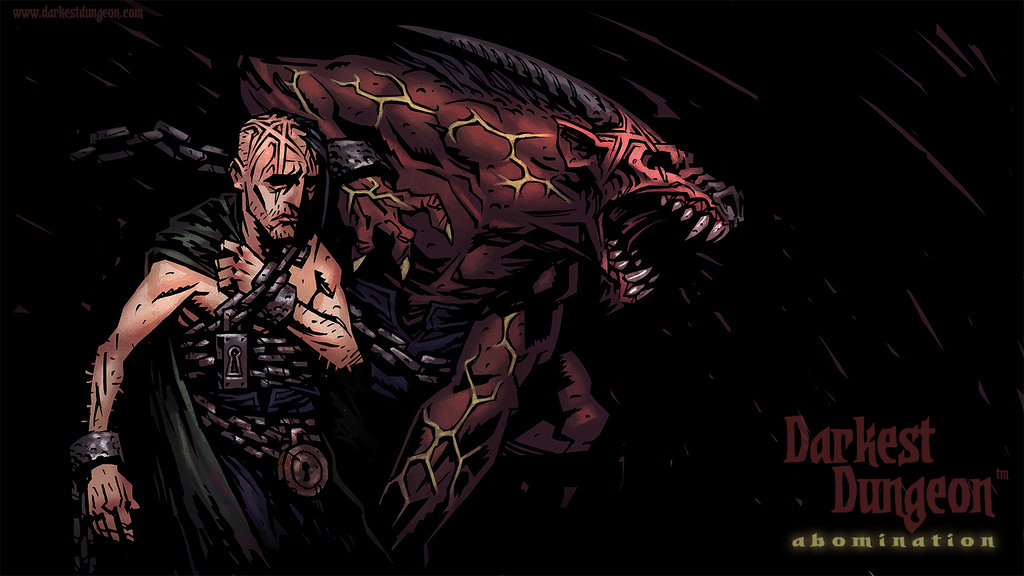
-
Darkest Dungeon #12
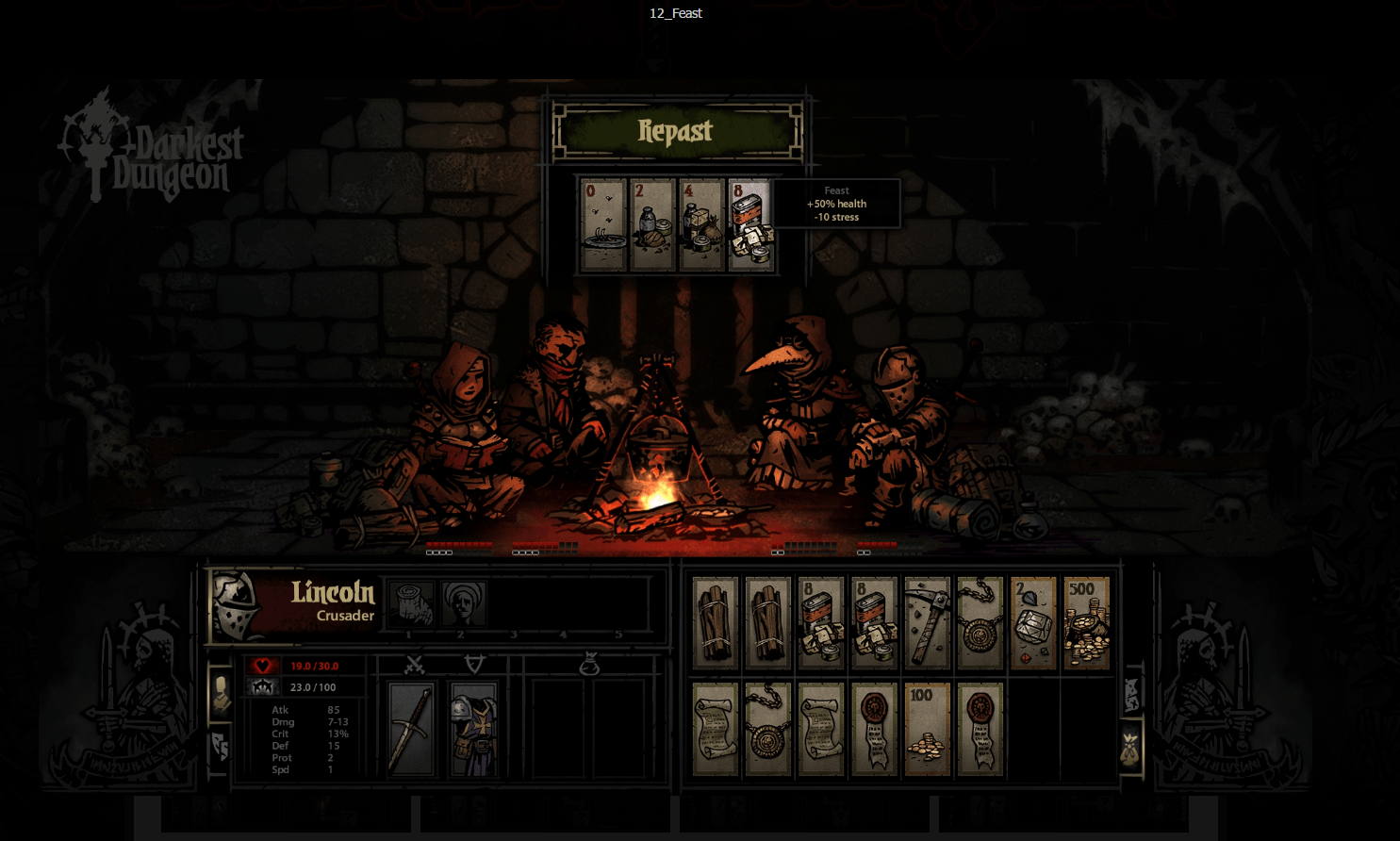
-
Darkest Dungeon #13
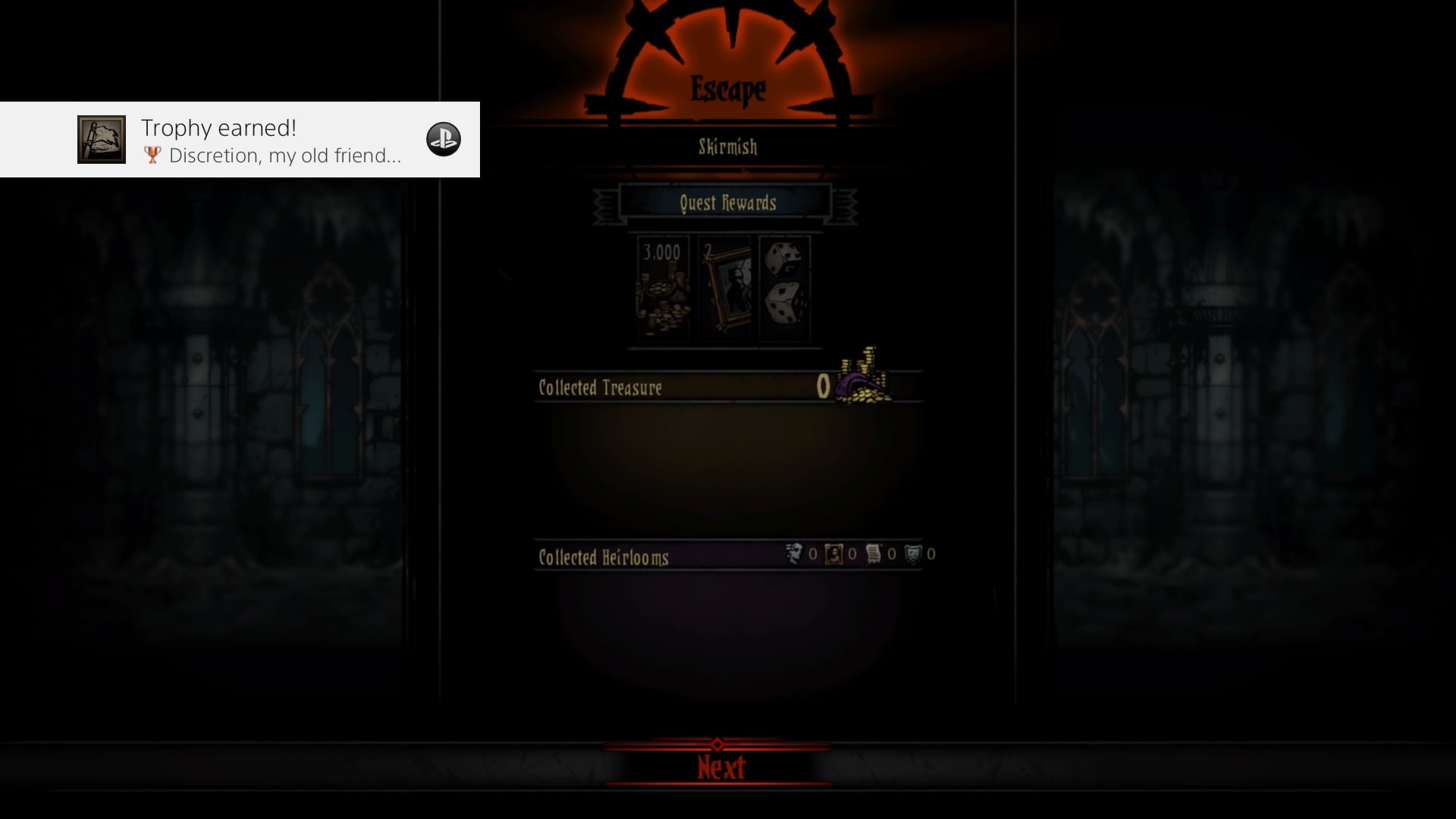
-
Darkest Dungeon #14
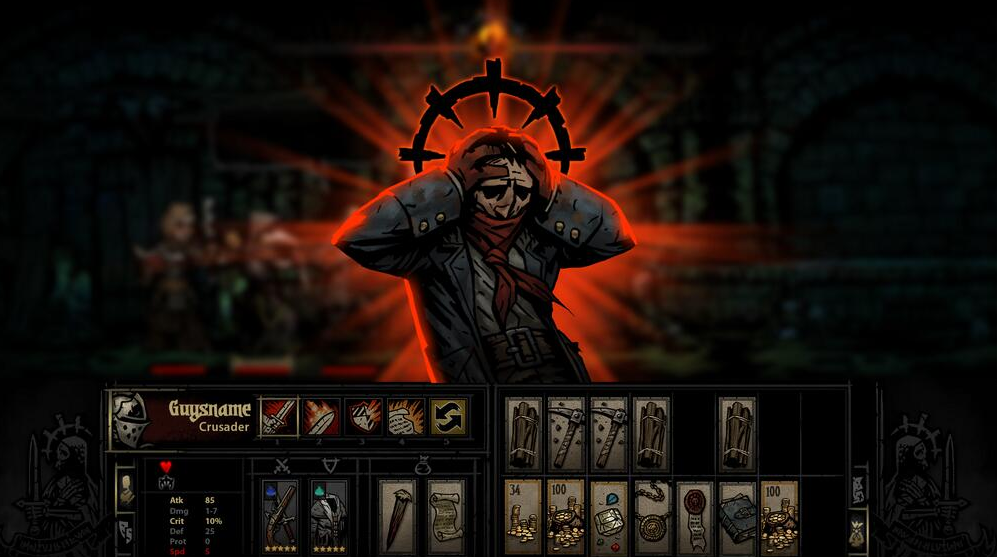
-
Darkest Dungeon #15
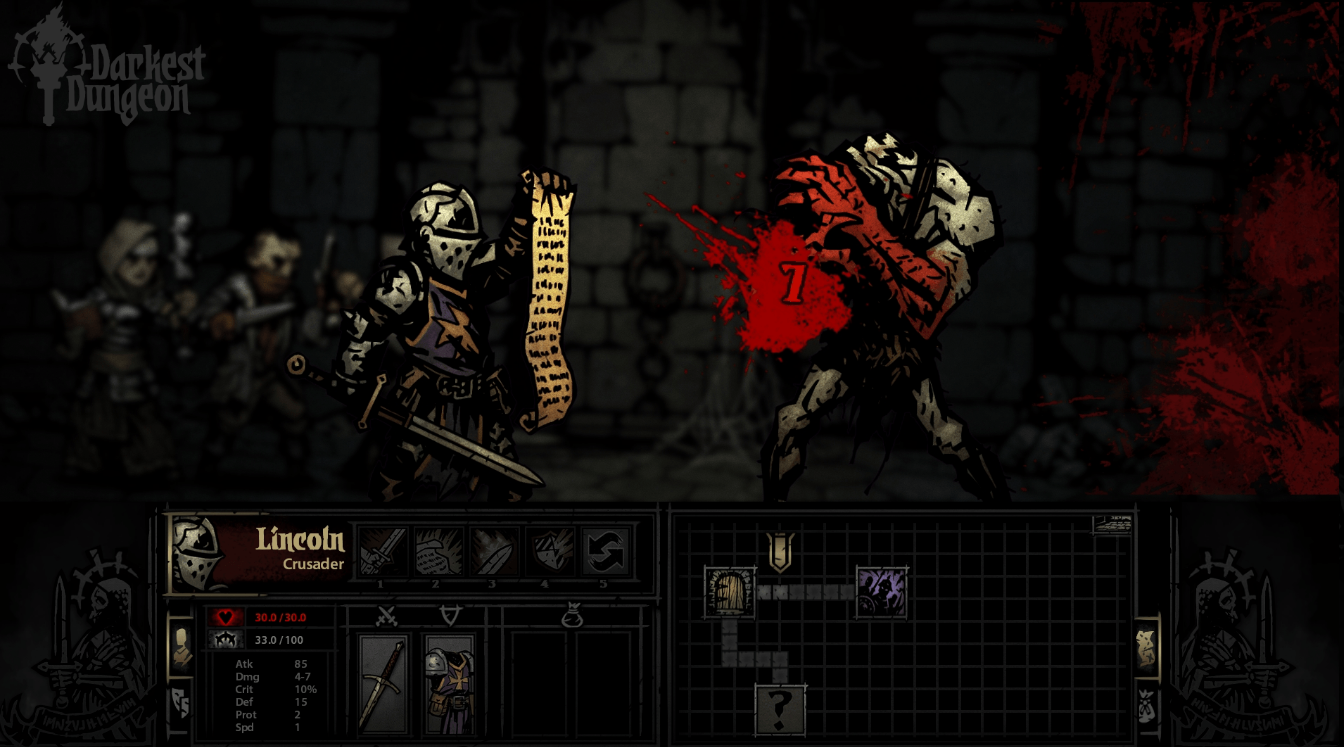
-
Darkest Dungeon #16
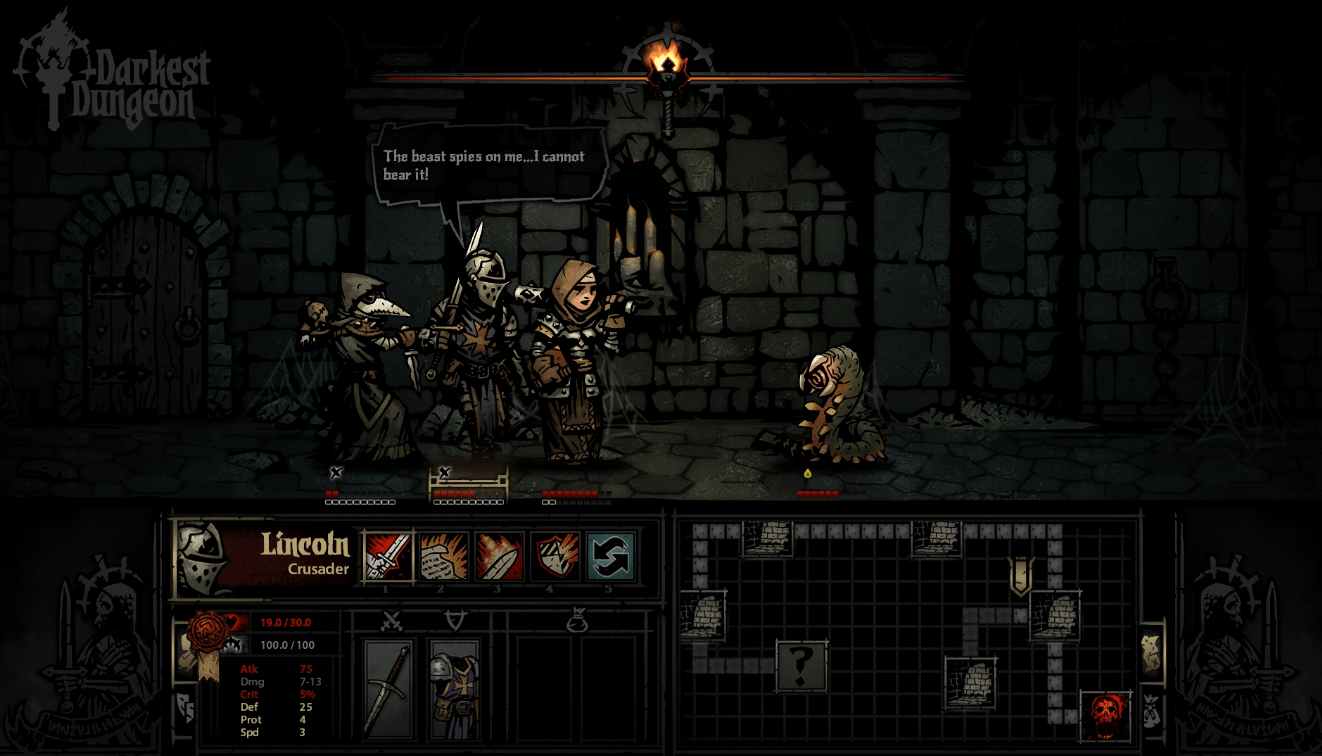
-
Darkest Dungeon #17
